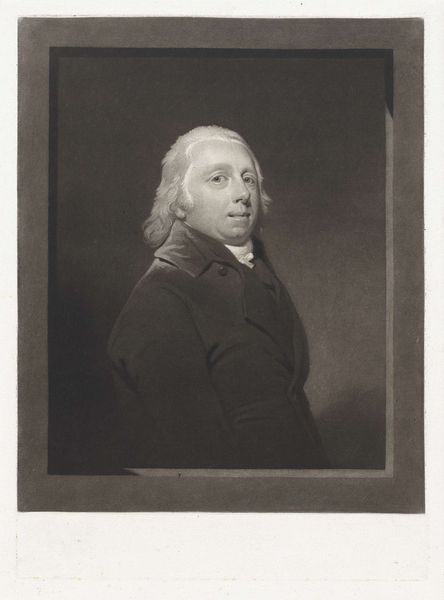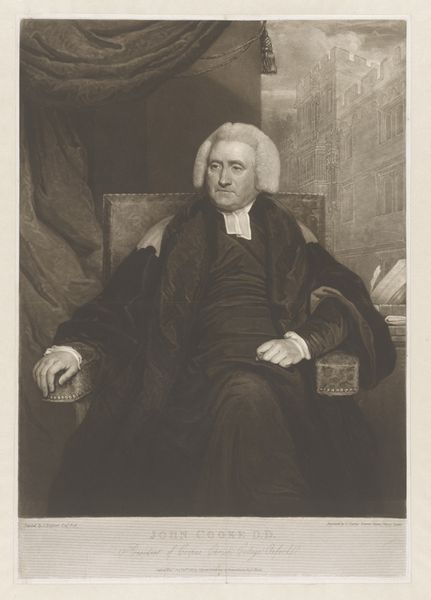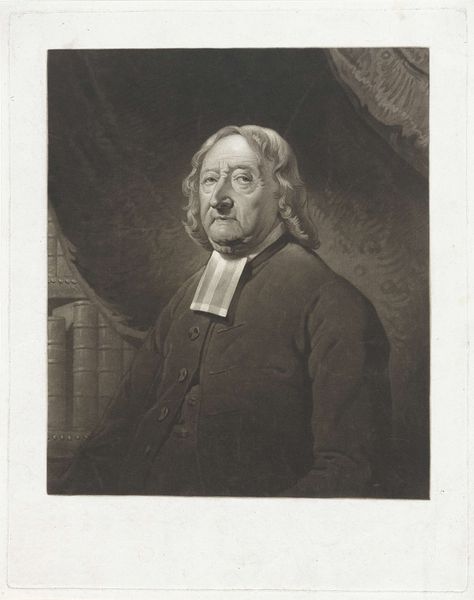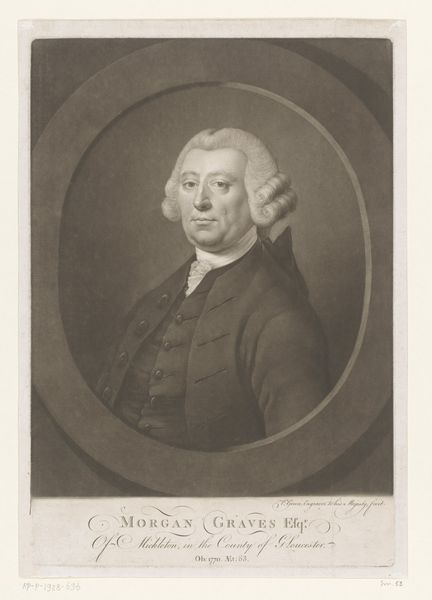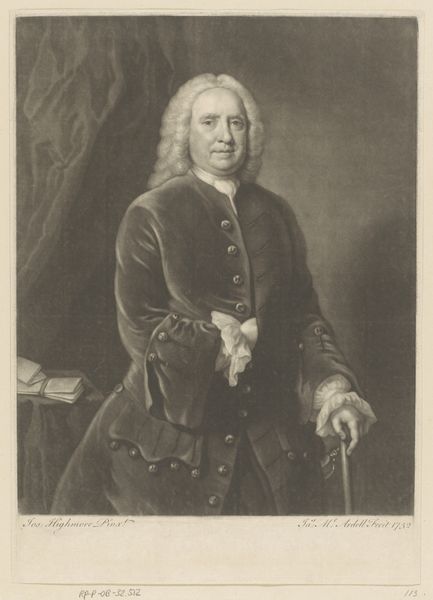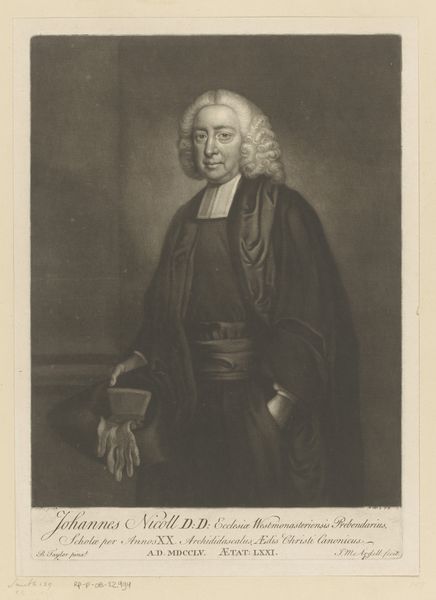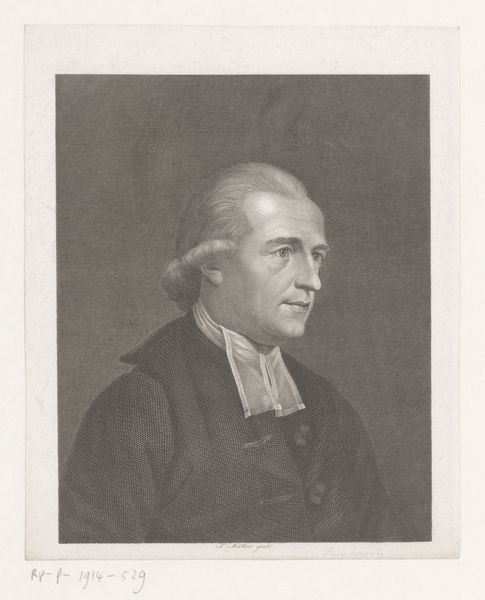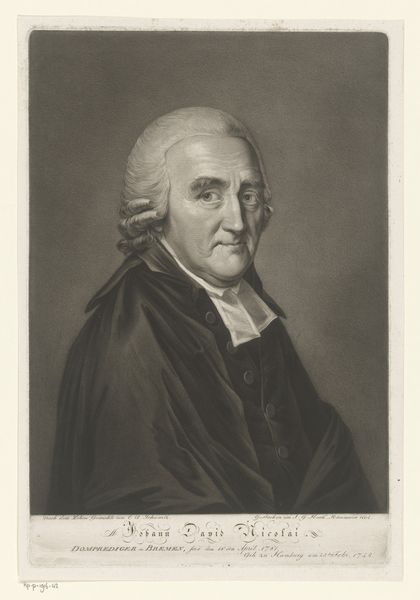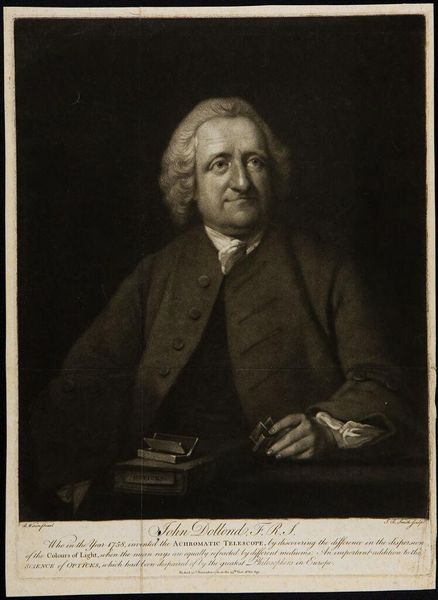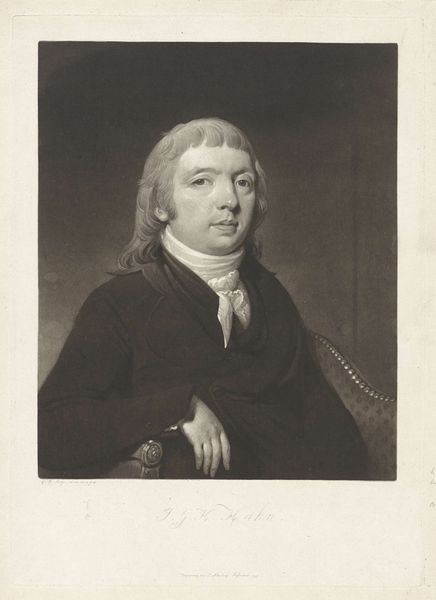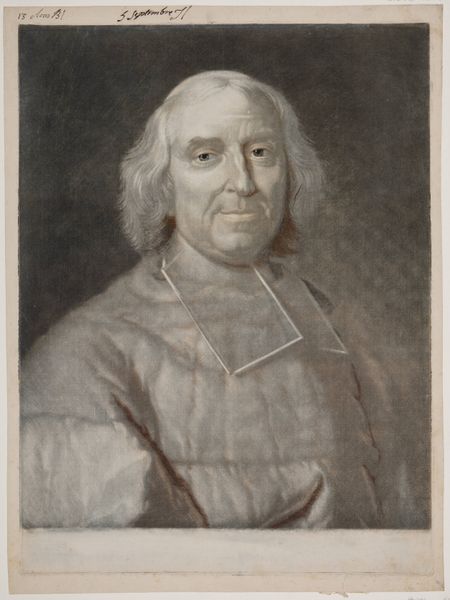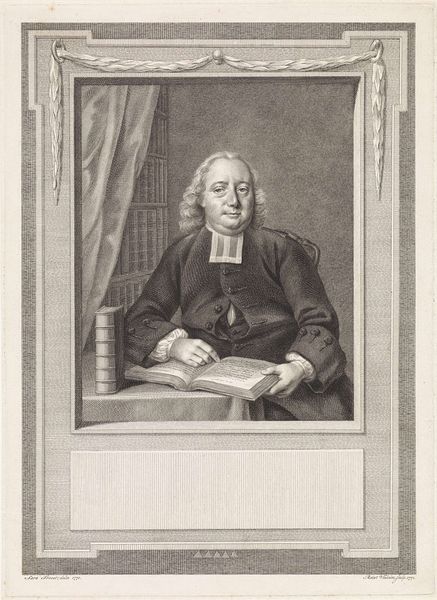
print, engraving
#
portrait
#
neoclacissism
# print
#
history-painting
#
engraving
Dimensions: height 270 mm, width 210 mm
Copyright: Rijks Museum: Open Domain
Editor: This is the “Portrait of Archibald Maclaine,” a print made in 1796 by Charles Howard Hodges, residing here at the Rijksmuseum. I'm struck by the contrast between the very detailed face and wig, versus the simpler treatment of the coat and background. What do you see in this piece? Curator: Formally speaking, the engraving employs a limited tonal range, creating a sense of visual harmony and balance. Note how the composition directs the gaze toward the sitter's face, establishing a clear focal point. How do you perceive the relationship between line and shadow in defining the subject's features? Editor: The shadows definitely give him a serious, thoughtful look. The lines seem very precise. What does that say about the artist's approach? Curator: The precision suggests a deliberate pursuit of realism and clarity, consistent with neoclassical ideals. Hodges demonstrates remarkable control over the medium, manipulating line weight and density to convey texture and depth. Consider the subtle gradations in the face. Where else do you see this kind of visual sensitivity? Editor: I notice similar variations in the wig – the curls nearest his face are darker, giving it more dimension. Curator: Precisely. This shows Hodges understood the capabilities of engraving to convey depth. Through variations in technique, he elevates a seemingly straightforward portrait into a nuanced study of character and form. Editor: So, by focusing on line and tone, Hodges created a compelling portrait in this medium. Curator: Yes, by looking closely at Hodges’ technique, we understand better his aesthetic approach.
Comments
No comments
Be the first to comment and join the conversation on the ultimate creative platform.
